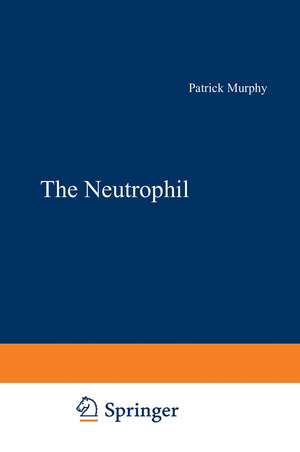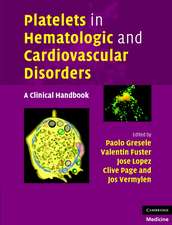The Neutrophil
Autor Patrick Murphyen Limba Engleză Paperback – 28 mar 2013
Preț: 364.74 lei
Preț vechi: 383.93 lei
-5% Nou
Puncte Express: 547
Preț estimativ în valută:
69.81€ • 75.86$ • 58.68£
69.81€ • 75.86$ • 58.68£
Carte tipărită la comandă
Livrare economică 21 aprilie-05 mai
Preluare comenzi: 021 569.72.76
Specificații
ISBN-13: 9781468474206
ISBN-10: 1468474200
Pagini: 232
Ilustrații: XII, 217 p. 42 illus.
Dimensiuni: 152 x 229 x 12 mm
Greutate: 0.32 kg
Ediția:Softcover reprint of the original 1st ed. 1976
Editura: Springer Us
Colecția Springer
Locul publicării:New York, NY, United States
ISBN-10: 1468474200
Pagini: 232
Ilustrații: XII, 217 p. 42 illus.
Dimensiuni: 152 x 229 x 12 mm
Greutate: 0.32 kg
Ediția:Softcover reprint of the original 1st ed. 1976
Editura: Springer Us
Colecția Springer
Locul publicării:New York, NY, United States
Public țintă
ResearchCuprins
1 Blood Cells.- 1.1. Platelets.- 1.2. White Cells.- Selected Reading.- 2 Morphology and Cellular Physiology of Neutrophil Granulocytes.- 2.1. The Nucleus.- 2.2. Nucleic Acid Metabolism.- 2.3. The Cytoplasm.- 2.4. The Granules.- 2.5. Cell Movement.- 2.6. Directed Cell Movement.- 2.7. Microtubules and Degranulation.- 2.8. The Cell Membrane.- Selected Reading.- 3 The Origin and Development of Neutrophils.- 3.1. The Bone Marrow and Neutrophil Precursors.- 3.2. Rates of Cell Division in Neutrophil Precursors.- 3.3. Neutrophil Precursors Which Cannot Be Recognized Morphologically.- 3.4. Summary.- Selected Reading.- 4 Tissue Consumption of Granulocytes and Control Mechanisms for Granulopoiesis.- 4.1. Distribution, Function, and Disposal of Neutrophils.- 4.2. Control of the Blood Neutrophil Level.- 4.3. Summary.- 5 Inflammation and Chemotaxis.- 5.1. Inflammation.- 5.2. Chemotaxis.- 5.3. Antagonists of Inflammation.- 5.4. Summary.- Selected Reading.- 6 Phagocytosis.- 6.1. Mechanisms of Phagocytosis.- 6.2. Physiological Significance of Phagocytic Mechanisms.- 6.3. Summary.- 7 Degranulation and Intracellular Killing of Bacteria.- 7.1. Historical Aspects.- 7.2. Phagocytin.- 7.3. Degranulation.- 7.4. Intracellular Killing of Bacteria.- 7.5. Summary.- 8 Other Activities of Neutrophils.- 8.1. Extracellular Release of Neutrophil Granule Contents.- 8.2. Enzymes Responsible for Tissue Damage.- 8.3. Abscess Formation.- 8.4. The Arthus Reaction.- 8.5. Nephrotoxic Nephritis.- 8.6. Serum Sickness.- 8.7. The Schwartzman Reaction.- 8.8. Human Diseases Involving Neutrophils.- 8.9. Neutrophils and Tissue Repair.- 8.10. Fever and Other Hormonally Mediated Responses to Infection.- References.







